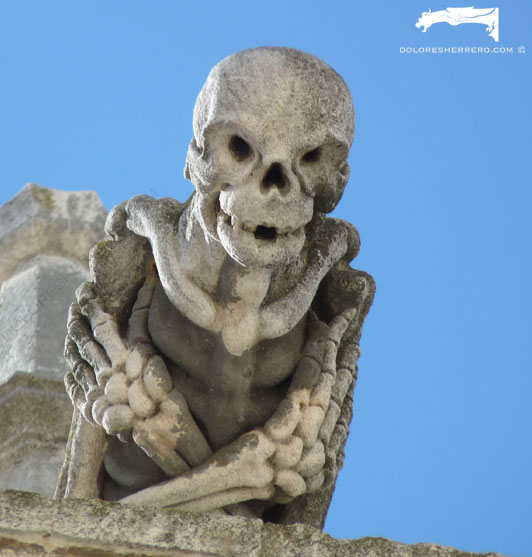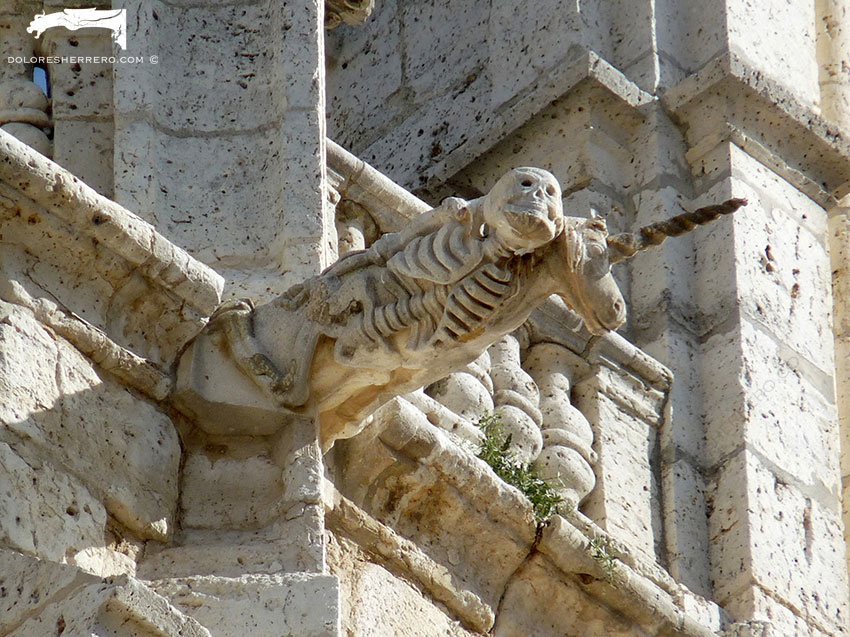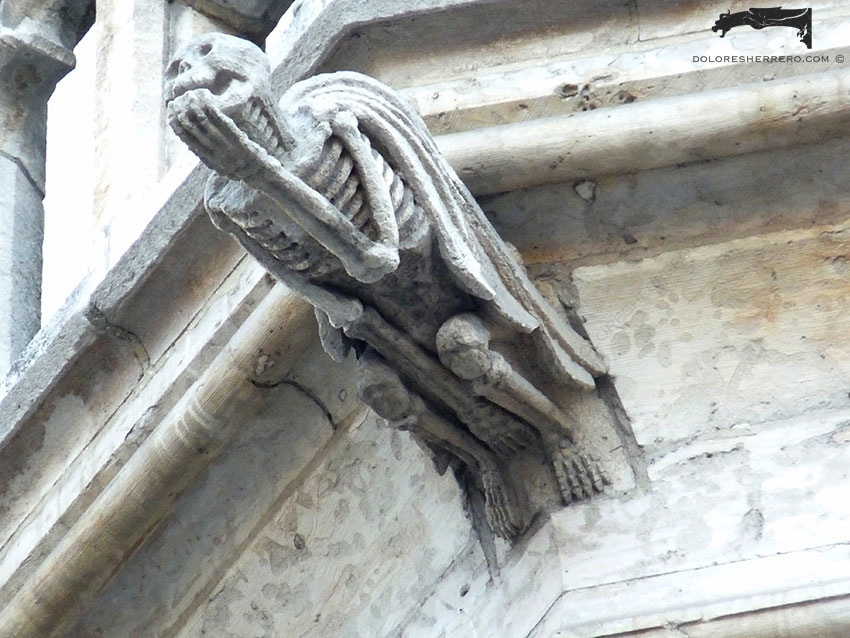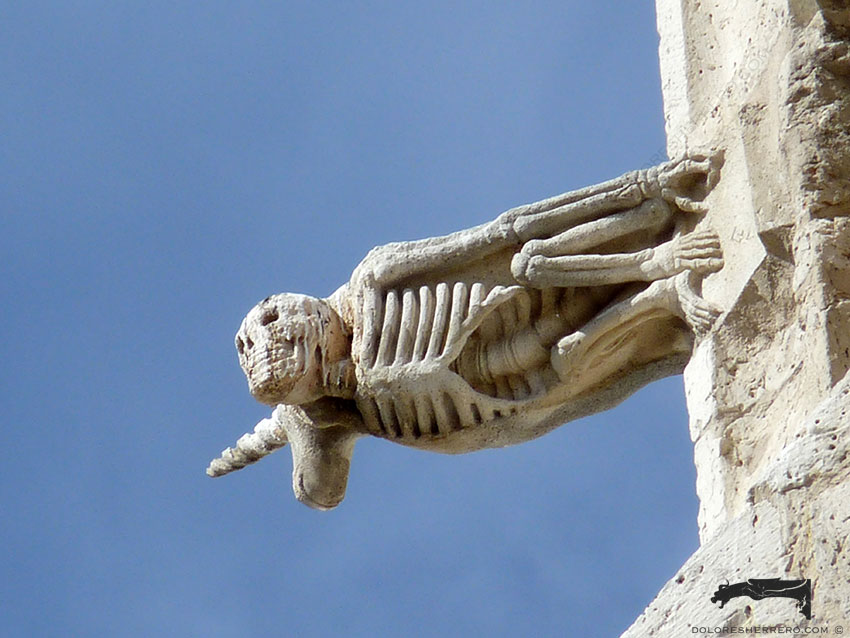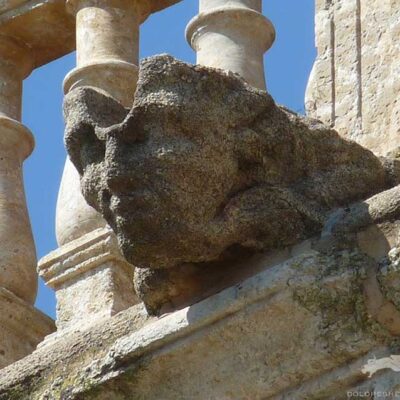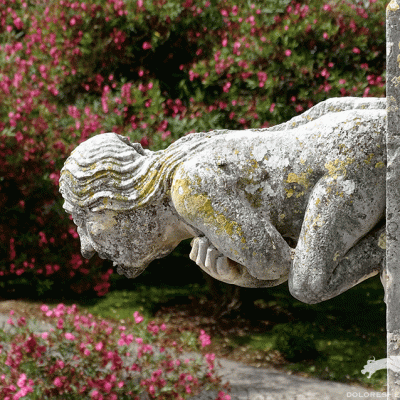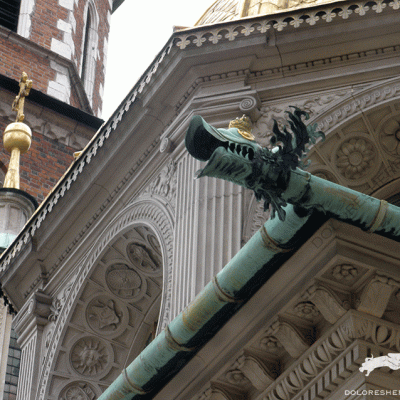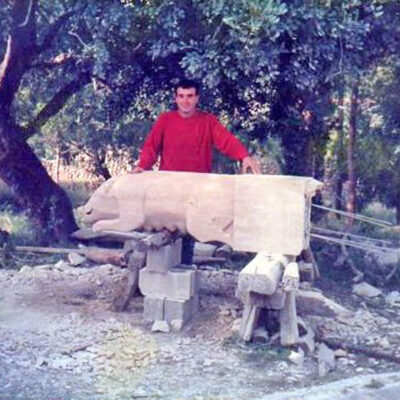Death is one of the most fascinating and sublime themes and images in literature and the visual arts. Macabre figures both attract and repel us. Due to its association with certain animals and all that is demonic, ugly and monstrous, death is sometimes represented in gargoyles. These depict the most archetypal image of death: the human skeleton.
The human skeleton is used as a symbol of death. The dictionary of symbols by Chevalier and Gheerbrant tells us that the skeleton is the personification of death and sometimes also symbolises the devil. For alchemists, it was a symbol of black, of decomposition and of the processes that augur transmutation. The ancient world had stamps or figurines of skeletons that according to Apuleius (second century) were used for magic. These skeletons are images of Mercury, the psychopomp god who had the power to descend into hell and return, and also to escort souls of the dead to the afterlife. In Petronius’ Satyricon (first century), a silver skeleton appears at a banquet to symbolise death and the brevity of life, spurring the guests to enjoy life and its fleeting pleasures. The mediaeval danse macabre, or dance of death, is also related to this idea, reminding spectators that the joys and pleasures of life will come to an end and everyone will die.
In some representations, the skeleton is shown carrying a scythe in one hand, as a symbol of the brevity of life, and an hourglass in the other, indicating the rapid passage of time.
Some animals are also associated with death. For example, the eagle appears in the Bible associated with rapacity and death: “From thence (the eagle) seeketh the prey, and her eyes behold afar off. Her young ones also suck up blood: and where the slain are, there is she” (Job. 39, 29-30).
In his Etymologiae, Isidore says of the serpent that Pythagoras claimed that snakes were born of the marrow of a dead man’s spine, an idea that associates the serpent with death.
Grivot says that demons with long tails and horns but of human appearance still appear in the fifteenth century, and that by the sixteenth century, the devil was associated with death.
In his Tales of Count Lucanor, Don Juan Manuel (fourteenth century) identifies monsters with death: “Everyone thinks or believes, / That the figure of death is foul”: “The History of Antioch tells of a holy father who after many days of praying to God to show him the what the figure of death looked like, heard a man’s voice calling him, and when he went out of his cell, he saw a beast with the body of an ass, the legs of a deer, the hooves of a horse, the face of a lion, two rows of teeth, a huge horn and the voice of a man; and understanding what this meant, he learnt all the vile conditions of death illustrated by this beast…” (vol. LI, Chap. CCXXVII: “Mortis imago multum est diformis”).
Death forms part of our psyche, and provokes negative feelings and emotions in us from an early age. Although it is rare to find gargoyles in the form of human skeletons, here are a few striking and fascinating examples.
Gargoyles and Grotesques
- Palencia Cathedral (Spain)
- Palencia Cathedral (Spain)
- Brussels City Hall (Belgium)
- Palencia Cathedral (Spain)
- Palencia Cathedral (Spain)
- Cathedral of María Inmaculada in Vitoria (Spain)
Bibliography consulted
GRIVOT, D., Le diable dans la cathedrale, Paris, Editions Morel, 1960.
MATEO GÓMEZ, I., Temas profanos en la escultura gótica española. Las sillerías de coro, Madrid, Consejo Superior de Investigaciones Científicas. Instituto Diego Velázquez, 1979.
SAN ISIDORO DE SEVILLA, Etimologías, II (Libros XI-XX), Madrid, Biblioteca de Autores Cristianos, de La Editorial Católica, S. A., 1982, XII, 4.

Doctor of Art History and researcher specializing in the study of gargoyles.
I am Dolores Herrero Ferrio, and my thesis, “An Approach to the Study of Gargoyles of Gothic Cathedrals in Castilla and León”, is dedicated to the study of these fascinating figures.
If you like gargoyles and art history, you will also enjoy my book, “The Gargoyle and Its Iconography,” a book I have written with great care for those interested in the world of gargoyles.
I have created my own Encyclopedia of Gargoyles, a Gargopedia to share with you, where you will discover all the secrets and wonders of these enigmatic sculptures.
I hope you enjoy this Gargopedia as much as I have enjoyed creating it, and remember that each gargoyle has a story to tell, and here you will discover them all.
